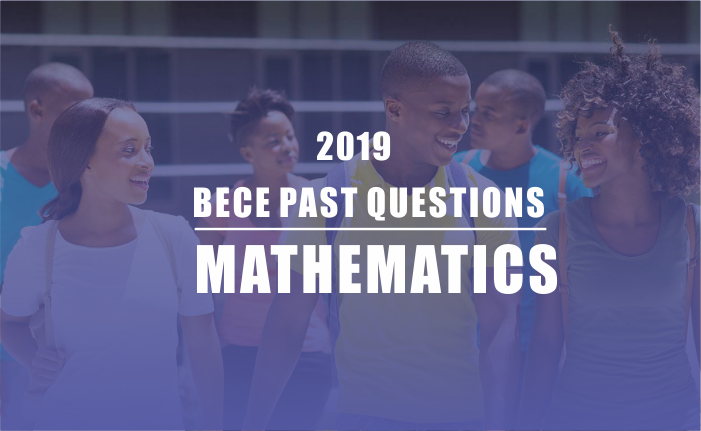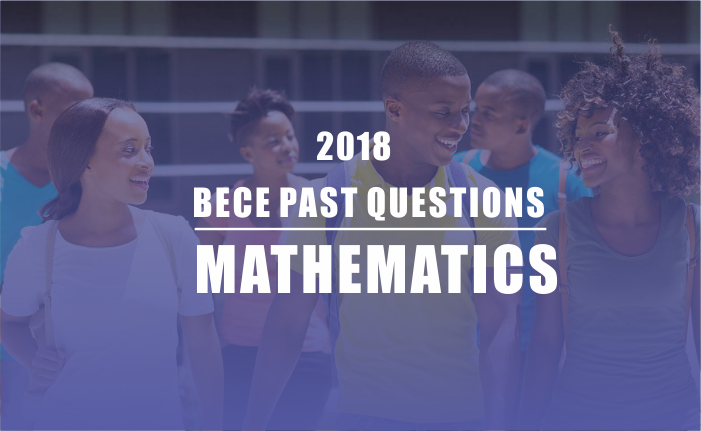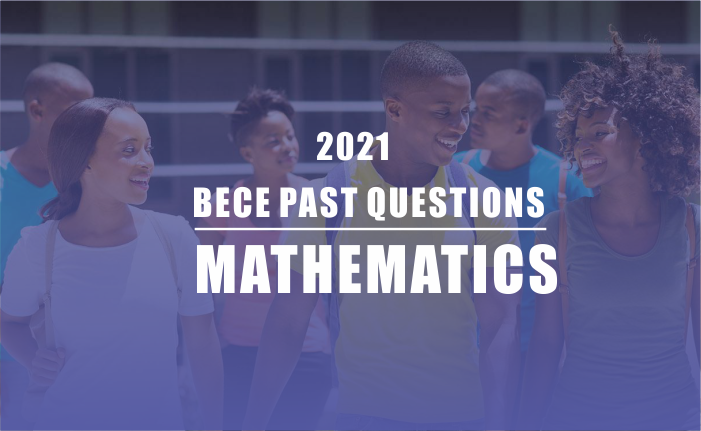Description
BECE 2019 Mathematics Questions and Answers
The Basic Education Certificate Examination, also known as the BECE, is an examination that is extremely important for students in many West African countries, including Ghana and Nigeria especially. Mathematics is one of the fundamental disciplines, and due to the technical nature of the subject, it frequently presents a difficulty to a large number of candidates.
Being able to properly prepare for the BECE Mathematics exam can have a significant impact on a student’s performance. Therefore, it is vital to have a solid understanding of the different sorts of questions and answers that have been asked on past exams, such as the BECE 2019 Mathematics paper. The purpose of this post is to provide students with a full understanding of the questions and answers that will be on the BECE 2019 Mathematics exam, as well as techniques that will assist them in approaching exam questions with confidence.
Overview of the BECE 2019 Mathematics Exam
The BECE 2019 Mathematics paper assessed students’ understanding of various mathematical concepts, ranging from arithmetic to geometry and algebra. It was structured into two sections: Section A contained objective questions, while Section B focused on more elaborate, problem-solving questions. Section A required students to select the correct option from multiple choices, while Section B demanded students to demonstrate their working process and logical reasoning.
This structure tests a student’s ability to think analytically and solve complex problems. Section A generally tests fundamental concepts, while Section B requires a deeper understanding and problem-solving skills. Reviewing both sections can help students grasp the range of topics and the expected level of difficulty.

Key Topics Covered in the 2019 BECE Mathematics Paper
The BECE 2019 Mathematics paper included topics across multiple branches of mathematics. Key topics included:
- Arithmetic and Number Theory – These questions required students to perform calculations with whole numbers, fractions, percentages, ratios, and proportions. Understanding the foundational principles behind numbers and operations was essential for success.
- Algebraic Expressions and Equations – Algebra questions ranged from simple equations to more complex expressions requiring simplification or factorization. Students needed to understand variables and constants and know how to solve equations for unknown values.
- Geometry and Measurement – Geometry questions involved calculating perimeters, areas, and volumes. Students were tested on shapes, sizes, angles, and spatial understanding. Measurement also included units of measure and converting between them.
- Statistics and Probability – This section focused on interpreting data, calculating averages, and understanding probability. Students needed to analyze data sets, find the mean, median, and mode, and determine the likelihood of various outcomes.
- Sets and Venn Diagrams – A common topic in the BECE exams, sets required students to understand the basic principles of union, intersection, and complement of sets. Venn Diagrams were also included to visually represent set relationships.
By focusing on these key areas, students can identify and strengthen areas that might need additional practice.
Sample BECE 2019 Mathematics Questions and Answers
To better understand the BECE 2019 Mathematics paper, let’s look at a few sample questions and answers from each major topic.
Example Question from Arithmetic and Number Theory
Question: What is the LCM of 12, 18, and 24?
Answer: To find the least common multiple (LCM), list the multiples of each number and identify the smallest common multiple. The LCM of 12, 18, and 24 is 72.
This type of question tests the student’s understanding of factors and multiples. Knowing how to find the LCM helps in tackling more complex problems in both arithmetic and algebra.
Example Question from Algebraic Expressions and Equations
Question: Simplify 3x+2x−4=03x + 2x – 4 = 0 and solve for xx.
Answer: Combine like terms: 5x−4=05x – 4 = 0. Solving for xx, we add 4 to both sides: 5x=45x = 4, then divide by 5: x=45x = \frac{4}{5}.
Algebra questions often require students to combine like terms or isolate variables. Practicing such equations helps in mastering algebraic manipulation.
Example Question from Geometry and Measurement
Question: A rectangle has a length of 10 cm and a width of 6 cm. Calculate its perimeter.
Answer: The perimeter of a rectangle is given by 2(l+w)2(l + w). Here, 2(10+6)=2×16=322(10 + 6) = 2 \times 16 = 32 cm.
Geometry questions typically assess the understanding of basic formulas for shapes. Being familiar with perimeter and area calculations is essential for geometry problems.
Example Question from Statistics and Probability
Question: What is the mean of the following numbers: 5, 10, 15, 20, and 25?
Answer: To find the mean, add the numbers and divide by the count. Here, (5+10+15+20+25)÷5=75÷5=15(5 + 10 + 15 + 20 + 25) \div 5 = 75 \div 5 = 15.
In statistics, students often need to calculate mean, median, and mode, which are essential skills in data interpretation.
Example Question from Sets and Venn Diagrams
Question: In a group of students, 30 study Mathematics, 25 study Science, and 15 study both subjects. How many study only Mathematics?
Answer: The number of students who study only Mathematics is 30−15=1530 – 15 = 15.
Sets questions test students’ ability to work with relationships and apply logical reasoning. Practicing with Venn Diagrams can make these questions more approachable.

Tips for Preparing for BECE Mathematics Exams
Studying past questions like those from BECE 2019 is an effective strategy. Here are some additional tips to help with preparation:
- Understand Key Concepts – Familiarity with fundamental principles in each topic area is essential. Don’t just memorize formulas; understand the reasoning behind them.
- Practice Regularly – Frequent practice with past questions will improve speed and accuracy. It helps students to familiarize themselves with the question format and difficulty level.
- Focus on Weak Areas – Identify topics where you face challenges and focus more time on those areas. By strengthening weaknesses, you can improve your overall performance.
- Work on Time Management – During exams, time is of the essence. Practicing under timed conditions will help you allocate time wisely during the exam.
- Use Study Aids – Many students find it helpful to use study aids like flashcards for formulas or even study groups to discuss problem-solving strategies.

Conclusion
Preparing for the BECE Mathematics exam requires a strong grasp of fundamental concepts, consistent practice, and familiarity with past questions. By studying past papers like the BECE 2019 questions and answers, students gain insights into common question formats, the exam structure, and the expected difficulty level. With dedication and strategic preparation, students can approach the BECE Mathematics exam with confidence, ready to achieve high marks and secure a bright future in their academic journey.





Reviews
There are no reviews yet.